by Roy Hunt
7 minute read
Waste crime is expanding at a quite alarming rate. That’s not just my view – I’ve heard it expressed by the police, the fire service, senior Environment Agency (EA) officers and my local MP. It seems far beyond the capability of the current regulatory system, split between the EA, HM Revenue and Customs and local authorities, to keep in check.
Companies are being set up that appear to have no intention of running a sustainable waste operation. Instead, they conveniently go bust, leaving the authorities to clear up the mess – all too often the ashes of a fire where there is a strong suspicion of arson. Those who keep within the rules are finding it tough to compete; and previously honest owners are turning to crime to survive financially.
I came to this issue without qualifications or experience in the waste industry. I retired 10 years ago as a European Sales Manager for IBM; but over the last three years, I’ve learned a great deal about certain parts of the sector (landfill sites, transfer stations, refuse derived fuel (RDF) operations, composting) as a local resident trying, almost in vain and often in frustration, to control the worst excesses of a company that took over a landfill site on the edge of our village.
A sales manager knows that salesmen will always push the boundaries in order to maximise their earnings, and if successful will attempt to push them further – regardless of the best interests of their company. The same applies in the waste industry, with owners and directors prepared to push profitability up to or beyond the edge of legality. This behaviour demands effective regulation to control it; but in some critical areas, such oversight seems sorely lacking.
Yet there are a number of initiatives that, if introduced, could help regulators and level up the playing field between honest and dishonest operators. To introduce all of them might justly be considered an attempt to ‘boil the ocean’; but, to implement none of them appears to leave regulators ‘fiddling whilst waste burns’.
Taking their fill
The largest single attraction that a landfill site has to the criminal fraternity is the taxation due on waste. A 20 tonne load of active waste will attract approximately £1,600 of landfill tax (LFT). But, a 20 tonne load of inert waste will attract only £50 and engineering or restoration material none at all.
Two common landfill frauds exploit these opportunities.
- “ghost lorries” that arrive on site and tip their load without any record.
- loads are tipped that purport to be inert or restoration materials that in reality are simply general waste, often shredded to resemble “fines”.
The whole LFT collection system seems to be based largely on trust. Even where individual loads are caught out, regulators seem ready to accept that it is the result of an error. In the rare cases where court action results, the penalties seldom if ever seem proportionate to the fraudulent profits.
Some straightforward regulatory steps would make this area of the industry less attractive to fraudsters:
- Require automatic number plate recognition cameras at the gate and weighbridge of every site, with the facility for the EA and HMRC to monitor them remotely.
- Similarly require CCTV of the waste tipping areas.
- With tax being by far the largest element of a landfill gate fee, regulators should be wary of cases where loads travel unusually long distances. Unless tax is being avoided, it’s hard to see the economic case for lengthy journeys, and close examination of the waste operators and sites involved are likely to turn up results.
- Closely examine the accounts of landfill companies (and their associate companies) whose profitability is out of step with industry norms.
- Require annual topographical surveys to be carried out by approved contractors to compare the increase in size of the landform against the declared tonnages shipped.
Action stations
The problems in waste management are by no means limited to landfill sites. My visits to waste transfer stations (WTS) have left me with significant concerns: for starters, did you know that WTS sometimes have no limitation on their environmental permit concerning the waste they can store? If it accumulates, stored waste can become a substantial liability – not always properly reflected in a company’s accounts – and a significant incentive for arson and voluntary liquidation of the company.
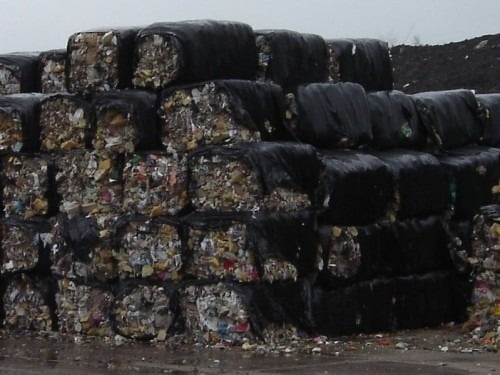
These fuelish things: stored RDF can give rise to serious problems. Photo by Fun4life.nl, via Wikimedia Commons.
I’m also concerned that, rather than being recycled, some of the waste is simply ‘processed’ – perhaps shredded – and renamed as something else, whether it be ‘restoration materials’ or ‘engineering materials’, and still finds its way in significant quantities to landfill. I can’t help but wonder how much impact this misclassified material has on our waste arisings and recycling figures…
Both of these problems could be tackled using some of the following measures:
- Install ANPR cameras as described above.
- Control to the lowest practical levels the waste tonnages that are allowed to be stored at WTSs and associated land.
- Define all waste shipments with a combustible element above 10% as active waste attracting the full landfill tax (a topic on which HMRC is already consulting)
- Conduct a programme of WTS inspections to ensure that active waste is properly classified; then monitor subsequent declared outputs to ensure consistency.
- Inspect WTSs whose returns show an apparently high percentage of inert waste going to landfill.
- Require a full audit of tonnages entering and leaving a WTS to ensure that, as far as possible, all tonnages are accounted for from source to destination.
- Require companies to include in their accounts the value or liability related to the stored waste that the company is responsible for, reducing the risk that a false impression of financial viability is given to investors and others. This requirement would have to be carefully worked through to counter the possibility of different companies claiming to own waste that was in reality the responsibility of the WTS.
Nobody’s fuel
I have been told by the EA and the local fire services that there are widespread issues with RDF across much of England. Problems can arise when an RDF manufacturer finds that they cannot dispose of material, perhaps because they have included materials it is illegal to burn. Ingenious ways of disposing of unwanted bales include dumping them on unsuspecting farmers’ land under the guise of haylage bales awaiting shipment, or abandoning the stuff in warehouses. If all else fails – well, at one stage recently, RDF fires were averaging more than one per week.
The basic problem with RDF is that you make money when you acquire it, but it costs money to dispose of. The disposal price is somewhat volatile, and you acquired waste expecting to be able to get rid of it at a price that is no longer available, you’re suddenly under financial pressure. The temptation is to hold on to the material and wait for the market to improve. It’s a risky business for legitimate operators; rather less so for operations that take the money to receive the waste with no intention to ever dispose of it legally.
To bring the RDF industry under control the following measures could be applied:
- Require any company actively creating an RDF stockpile to have proportionate contracts in place, whether with domestic disposal facilities or overseas shipping contracts.
- Require all RDF facilities to be insured for the cost of clean-up if fire breaks out.
- Ensure RDF bales are date stamped and prohibit the storage of bales that are more than six months old. A Viridor spokesman on EfW has stated that older bales are virtually useless.
- Tightly limit the amount of un-baled RDF allowed to be stored on a site.
- Use CCTV to monitor the number of bales stored and use daily snapshots to track the age of the bales.
- Limit the tonnage of RDF bales that can be stored and require companies to make financial provision. This will reduce the incentive to store RDF and provide the EA with funds to tackle abandoned or fire damaged sites.
- Require all companies to include in their accounts the estimated disposal cost of all stored RDF.
Tighter monitoring and regulation is rarely called for by industry, but it is surely in the interests of the legitimate waste sector to work with regulators to make the system more robust. Even if it proves impossible to wholly eradicate the criminal element, there is surely an urgent need to make their lives a lot more difficult than at present. The EA needs to be resourced for the job, with the costs offset through additional landfill tax receipts and saved clear-up costs. Until that is done, the impunity of reckless waste operators to blight the lives of residents in areas surrounding waste sites will continue unchallenged.
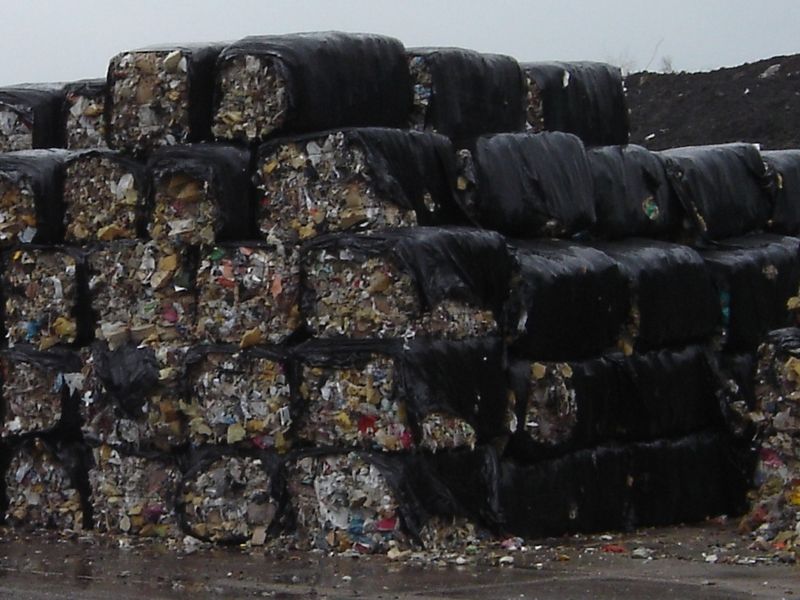


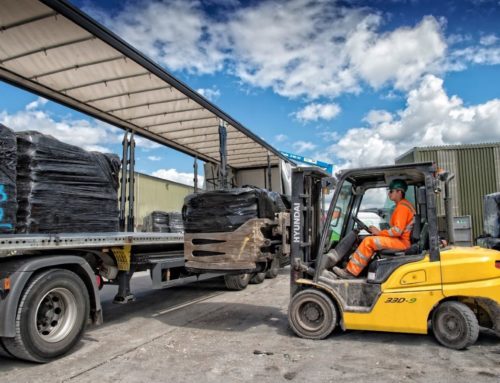

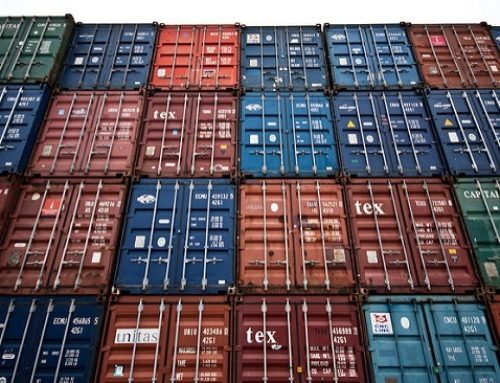
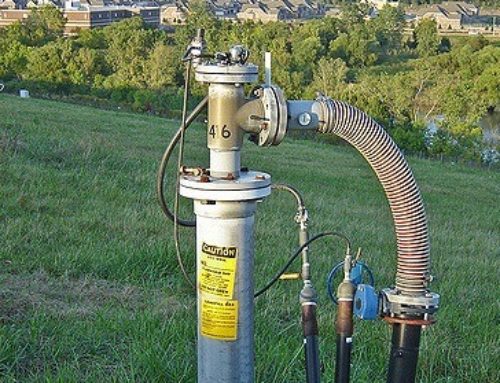
Very good article. A relatively easy start to this would be proper Duty of Care audits by the regulators from ‘cradle to grave’ to coin a phrase. The EA are resourced for Haz waste consignment notes, so they could have a check through those to start with.
I agree with nearly everything in this article and if the government is wise it will take it seriously. This situation was not unpredictable. Even before landfill tax reached significant levels, the EA was concerned by the involvement of criminal gangs in the industry. Landfill Tax has done many good things but it has also raised the attractiveness of waste crime both to shady operators and businesses who don’t want to pay higher charges for waste services.
This has to be dealt with by tougher and enforceable permitting. The spate of fires particularly at RDF sites is not only bad for the legitimate industry and the environment but it makes waste operations even more of a bad neighbour making it even harder to get planning permission for necessary waste infrastructure.
Terrific article. Also great to see some solutions floated, not just a list of problems!